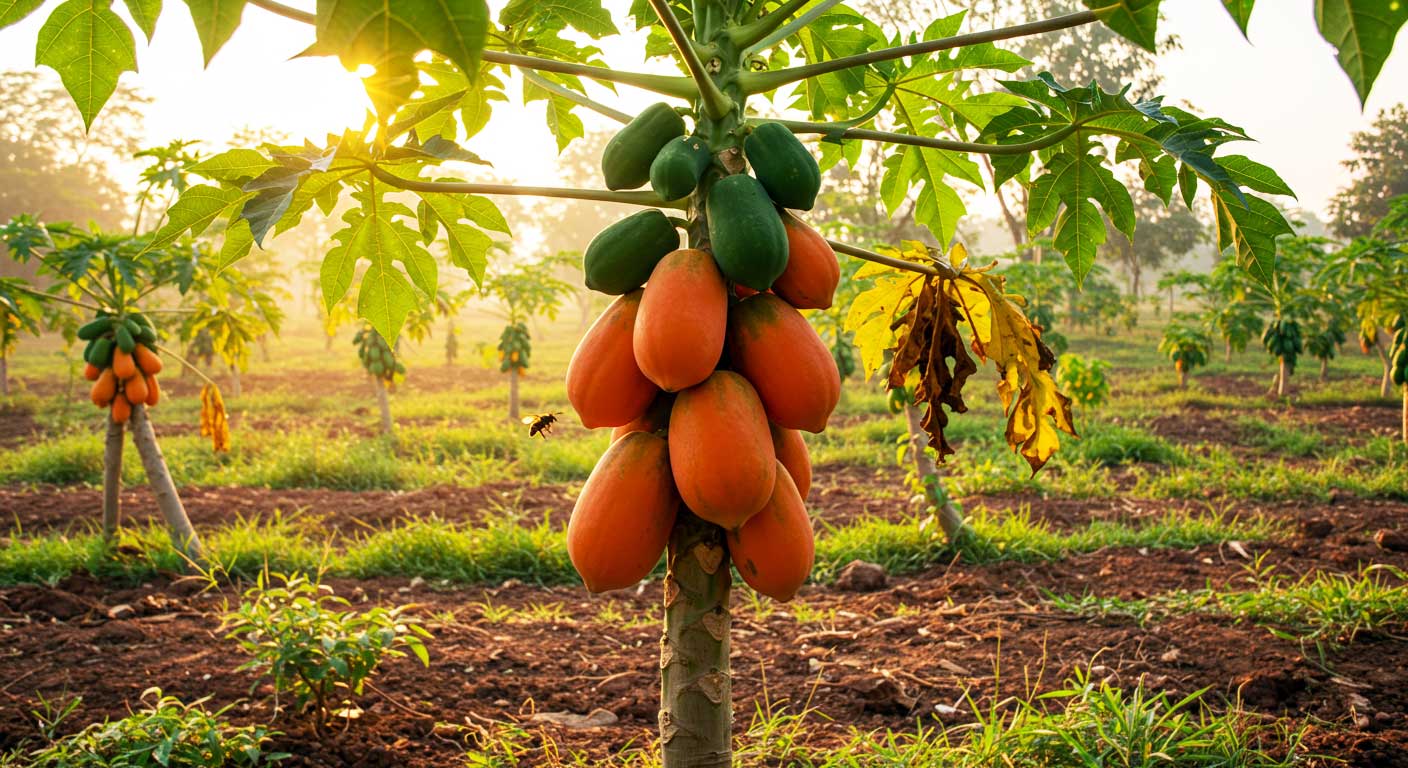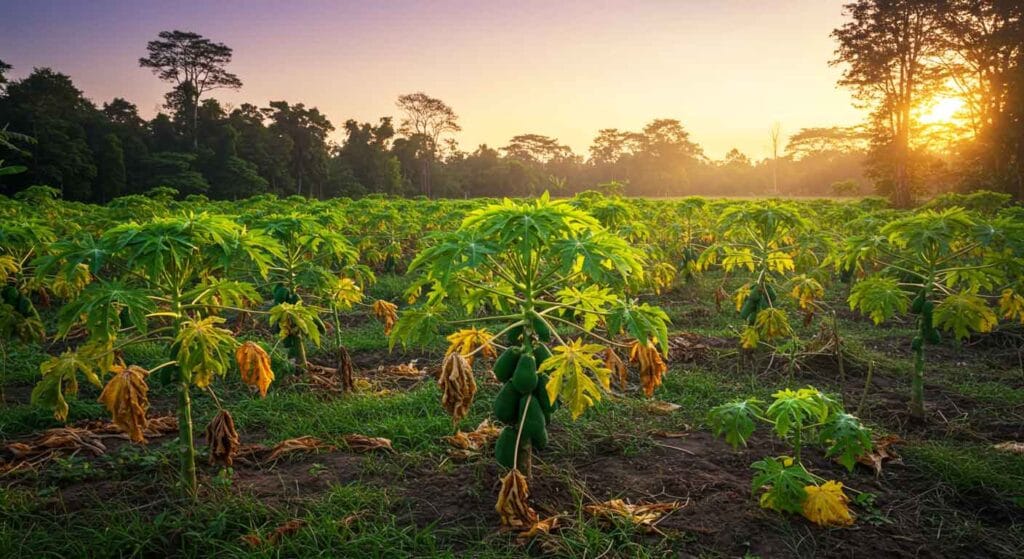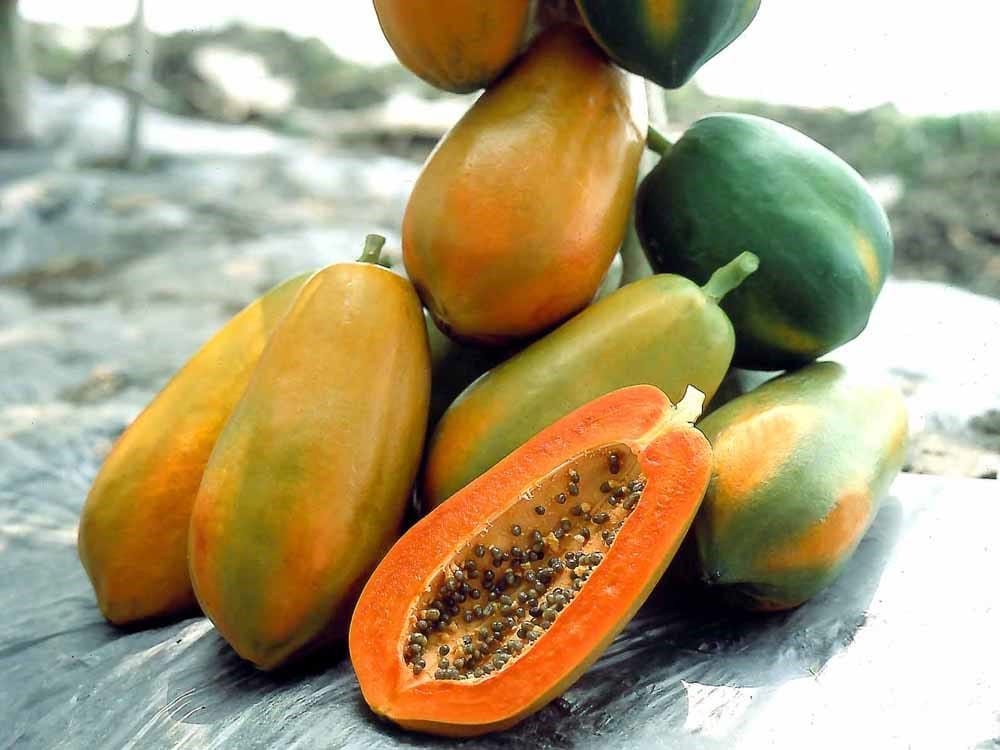Red Lady Papaya is gaining significant traction Red Lady Papaya in Ghana’s agricultural sector due to its early fruiting, high yield, and disease resistance. This hybrid variety, originally developed in the Philippines, is becoming a favorite among commercial farmers and smallholders alike. Here’s a detailed overview of why Red Lady Papaya is thriving in Ghana and how farmers can take full advantage of its potential.
What is Red Lady Papaya?

Red Lady Papaya is a self-pollinating, dwarf hybrid papaya variety known for its vigorous growth and resilience. Unlike other papaya types that require both male and female plants, each Red Lady tree contains both flower types and produces fruit independently. It is admired for its bright salmon-orange flesh, melon-like aroma, and sweet taste. A mature tree can yield up to 100 fruits by its second year, with individual fruits weighing between 0.5 to 2 kilograms.
Why Red Lady Stands Out from Other Varieties
Compared to traditional varieties like the Hawaiian Solo or Ghanaian Calina, Red Lady is:
- Faster to fruit, producing harvestable yields in 7–9 months.
- More disease-resistant, especially to papaya ringspot virus (PRSV).
- Easier to manage, thanks to its dwarf height (2–3 meters).
- Superior in taste and color, due to high levels of lycopene and beta-carotene.
These features make it ideal for both local consumption and export markets.
Is Ghana’s Climate Suitable for Red Lady Papaya?
Yes. Ghana’s tropical climate—especially in coastal and forest zones like Greater Accra, Volta, Eastern, and Central regions—offers ideal conditions. Red Lady thrives in:
- Temperatures between 25°C and 30°C
- Full sun exposure
- Low altitudes (below 1,200 meters)
However, irrigation is essential during the dry season (November to March) to sustain flowering and fruiting.
Establishing a Red Lady Papaya Farm
Nursery and Transplanting
- Start from seeds in nurseries.
- Transplant when seedlings are 15 cm tall, during cool parts of the day.
- Planting holes: 45 cm wide x 30 cm deep, spaced 2–2.5 meters apart.
Soil and Mulching
- Ideal soils are well-drained, rich in organic matter, with a pH between 6.0 and 7.0.
- Avoid heavy clays or waterlogged areas.
- Use black/white plastic mulch to retain moisture, suppress weeds, and repel insects.
Fertilizer and Nutrient Needs
Red Lady papayas require consistent feeding:
- At transplanting: 25–30 g of 12-24-12 fertilizer per plant.
- During growth: Weekly applications of 50–60 g of 20-10-10 fertilizer.
- Monthly foliar sprays: Include micronutrients like boron, zinc, and manganese.
- Apply compost/manure (5–10 kg per tree annually) and organic mulch regularly.

Avoid chloride-based fertilizers and ensure proper placement of nutrients around the drip line or trunk base.
Watering and Irrigation
Though drought-tolerant once mature, papaya trees require regular watering during flowering and fruit-fill to avoid poor-quality fruit. During dry spells:
- Sandy soils may need daily watering.
- Heavier soils may need irrigation every 3–4 days.
- Each tree should receive about 1–2 liters of water per day during fruiting.
Use drip or sprinkler systems for efficient irrigation.
Pest and Disease Management

Major Threats
- Papaya Ringspot Virus (PRSV): Spread by aphids. Control via resistant varieties, mulching, intercropping, and sanitation.
- Papaya Mealybug: Introduced in 2009, this pest causes widespread damage. Use natural predators, organic sprays, and scouting.
- Fruit Flies: Lay eggs in fruit. Use bait traps and remove fallen fruits promptly.
- Whiteflies and Aphids: Vectors for PRSV. Use biological control like lady beetles.
- Fungal Infections: Anthracnose and Phytophthora thrive in humid conditions. Maintain good spacing, avoid waterlogging, and sanitize tools.
Integrated Pest Management (IPM)
- Use reflective mulch, intercropping, tool hygiene, and biological agents for sustainable control.
Expected Yield and Production Timeline
Under optimal care:
- Red Lady papaya begins fruiting in 7–9 months.
- Trees can yield 80–100 fruits annually.
- The harvest continues for 2–3 years, with peak yields in the second year.
Farmers using best practices—irrigation, mulching, fertilization, Pest and Disease Management—can significantly improve yield and fruit quality, making Red Lady a profitable agribusiness venture.
In a nut-shell
Red Lady Papaya is a transformative crop for Ghanaian farmers. It combines early returns, high yield, and resilience, making it ideal for the country’s climate and export ambitions. With the right techniques—from nursery setup to pest control—farmers can enjoy both local and international market opportunities. Whether you’re a smallholder looking to diversify or an investor exploring horticulture, Red Lady Papaya presents a compelling option.











